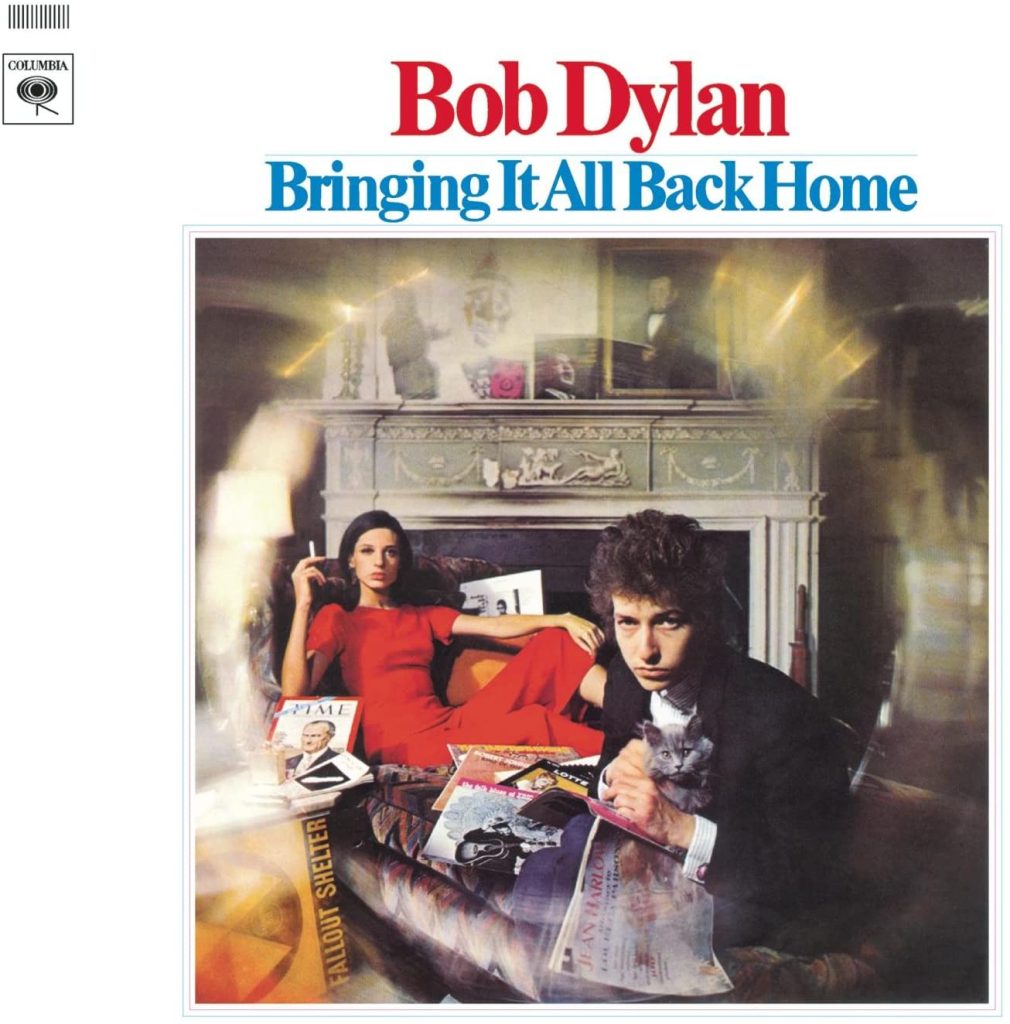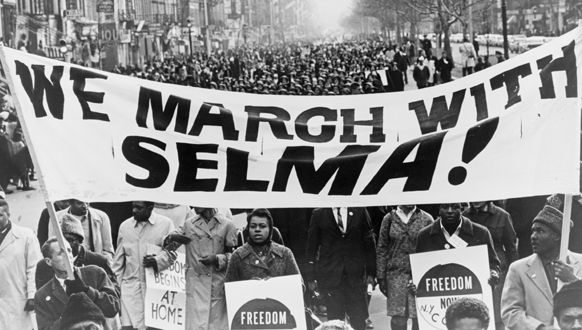
50 ! Here I am with “Bringing It All Back Home”, the 50th album of the list but the quest is still (very) long. And for this 50th album, we find the Nobel Prize winner for literature: Bob Dylan. The years 1964 and 1965 were a crucial period in Dylan's career, marked by major events such as his transition from traditional folk music to rock music, his involvement in civil rights and his commercial success.
In 1964, Dylan released his album ‘The Times They Are A-Changin”, which became an anthem of the time for the civil rights and anti-Vietnam War movements. Songs on the album, such as “The Times They Are A-Changin'” and “With God on Our Side”, express social and political critiques of America's contemporary conflicts. Dylan was also involved in the civil rights movement, supporting events such as the 1965 Selma to Montgomery march.
In addition to his political implications, Dylan also began to experiment with a new rock sound. Sacrilege for folk music purists! The album ‘Bringing It All Back Home' featured rock and roll elements with electric instrumentation, breaking the tradition of acoustic folk music.
Dylan continued his rock style with the album “Highway 61 Revisited” later in 1965, which featured more complex instrumentation and more personal themes in the songs' lyrics. “Like a Rolling Stone”, the album's single, was a huge commercial success and is considered one of the most influential songs in rock history.
The album Bringing It All Back Home
The album is divided into two parts: the first half contains acoustic folk songs, while the second half is more rock, with electrified songs. This was seen as a radical change of direction for Dylan, who expanded his musical style and sonic palette, exploring new sounds and innovating his music.
‘Bringing It All Back Home' is known for its poetic and often obscure lyrics. The songs on the album explore themes of love, loss, loneliness, longing and social criticism. Dylan uses striking metaphors and imagery to express his ideas, giving his music depth and complexity.
Subterranean Homesick Blues
The song begins with upbeat music and fast, poetic lyrics that have been considered a precursor to rap. The song's lyrics address various social and political themes, but their exact meaning often remains obscure. However, this obscurity has contributed to the fascination with the song, stimulating the imagination of listeners.
The lyrics of ‘Subterranean Homesick Blues' have also inspired many artists. The song has been covered and remixed by artists such as the Red Hot Chili Peppers, Harry Nilsson and Eddie Vedder of Pearl Jam. The lyrics have also been quoted in films, books and television shows.
The video clip for the song is also famous, with Dylan holding signs displaying the song's lyrics while throwing them behind him. This video is considered a precursor to modern music videos, with its documentary style and simplicity.
The exact meaning of ‘Subterranean Homesick Blues' remains open to interpretation, but some see the song as a critique of American society at the time, with its references to drugs, war, poverty and politics. The song can also be interpreted as a declaration of Dylan's artistic independence, as he sought to break away from traditional folk music and explore new sounds and ideas.
Mr. Tambourine Man
The song begins with poetic lyrics about a man who is looking for a “drummer” to help him escape his everyday reality. The song's lyrics have been interpreted in different ways, but many see the song as an invitation to imagination and freedom.
The melody of ‘Mr. Tambourine Man' is also very captivating, with a hypnotic rhythm that transports the listener into a trance-like state. The sound of the acoustic guitar and harmonica adds to the dreamy atmosphere of the song.
The song has been covered and remixed many times, with artists such as The Byrds, Judy Collins, and Stevie Wonder all releasing their own versions of the song. The Byrds' version in particular became a commercial success and is often considered the most popular version of the song.
The exact meaning of ‘Mr. Tambourine Man' remains open to interpretation, but the song has been interpreted as an ode to freedom and imagination, with the ‘tambourine man' representing a mystical figure who can help man escape his dull reality. The song can also be seen as a reflection on Dylan's life as an artist, seeking to escape the pressure and expectation of the public to explore new creative territory.
Where to listen to Bringing It All Back Home?
- Listen to Bringing It All Back Home on Spotify
- Listen to Bringing It All Back Home on Deezer
- Listen to Bringing It All Back Home on Youtube
